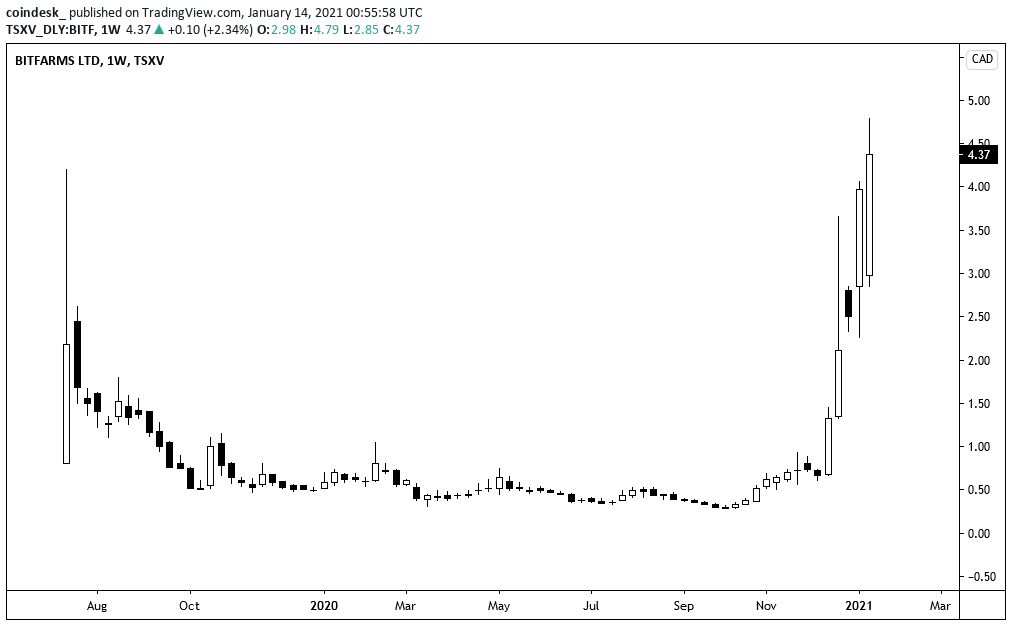Banks Have to Embrace Distributed Ledger Tech, Even if It Kills Them
Chuck Fried is the President and CEO of TxMQ, a technology consulting and integration company specializing in the financial services industry. He has more than 30 years of experience helping banks set up, manage, transform and evolve their IT systems to improve customer service and reduce the risk of fraud and data loss.
As someone who spends a large amount of time inside IT departments of major banks, I like to tell people two things. The first is that some of the brightest and cleverest people I’ve ever met work in bank technology groups. The second is that many banks have facilitated a culture of complacency when it comes to technological transformation.
I find this attitude often presents itself as fear – more specifically, fear of change. It’s understandable: over time a leading market position, steady successes, and routine, if not staggering, annual growth starts to make one feel immune from competition. You begin to become complacent. And what is complacency really but fear of change?
Nowhere is this complacency more evident than in the way the banking industry is looking at distributed ledger technology (DLT or Blockchain). I see DLT treated as anything from a passing fancy to an unwelcome distraction by banking IT leaders. In my experience, these attitudes are the result of a lack of information about the tech. To that end, here’s what I tell bank leaders about blockchain and DLT .
The power of entropy
For decades, banks operated in virtual vacuums. Few external pressures could touch them. Customers made deposits, and took out loans. The delta between savings rates and loan rates was the bank’s operating profits. That business model created tremendous wealth for banks in the U.S. and around the world. The system all worked perfectly – until it didn’t.
Throughout banking history what little innovation that has occurred has proceeded at a glacial pace, typically being driven by what we would today call “fintechs.” New technologies came primarily in the form of point solutions built by outside firms: check imaging, for instance, didn’t originate in bank in-house technology groups, but rather at external firms that were later absorbed by banks. In short, most of the tech we see, use and expect from our banks was built somewhere else, and later acquired by banks.
Now though, banks are increasingly threatened by the rise of competitors like alternative banks and the modern fintech economy. These businesses come primarily out of Silicon Valley startup culture, which emphasizes disruption, rather than continuity with established business models. With either innovative tech (mobile banking) or innovative business models (e.g., online lending marketplaces) or both, they are gobbling up whole customers bases that have been traditionally held by the big banks. Take mortgages, for instance: the top five U.S. banks accounted for just 21 percent of mortgage originations in 2019, compared to half of all mortgages in 2011.
Beyond “innovaphobia”
These developments are forcing banks to confront their fear of change in a way they haven’t had to previously. The result is that many are forcing themselves to innovate faster than they ever have before. That’s why when I work with banking clients I’m constantly bringing up DLT as one of a number of new technologies to explore.
It should be taken as gospel that banks have an inherent fear of innovation, but, even within that mindset, DLT occupies a uniquely anxious space. Technology may be all ones and zeroes, but there’s something about digital ledgers that makes bank IT teams heads spin.
What I tell these skeptics is that while they’ve been complacent and resting on their laurels, blockchain POCs have been quietly winning the day. The technology works. Works amazingly well for the right use cases. Blockchain startups, pursuing applications from cross-border payments to supply chain management to digital identity management, are now too numerous to name. Major economists have in recent years embraced blockchain as part of a solution to address various global finance challenges. The upshot: If your banking institution isn’t already putting R&D work into blockchain solutions, then you’re already behind.
I’ve found that clients don’t really know what to do with DLT. They don’t understand the right use cases, and so often suggest ideas that sound really interesting, but aren’t well suited to the technology. Educating banks on what DLT can do and what it cannot is thus crucial.
Banking on blockchain
It bears noting that some of the most interesting and potentially game changing use cases are those that present the greatest existential threat to banks. Banks are middle people. Intermediaries. Customers deposit, banks lend.
What if we didn’t need this service, and could eliminate this need for the bank as a ‘third party’ to transact? What if we could interact directly using DLT, without a need for a financial services intermediary at all?
This is the true promise of blockchain. Transactionality in a trustless world. This is where fintechs play, and banks fear to tread.
Thus, paradoxically, DLT is both a threat and an opportunity for banks. The threat as laid out above is that banks’ own resistance to change will lead to them watching the opportunity of DLT pass them by – because DLT is going to transform the economy, with or without their leadership. If banks want to secure their futures, it is vital that they confront their fear of change and embrace innovation in all its disruptive splendor. That’s the opportunity in front of them now.
Disclosure Read More
The leader in blockchain news, CoinDesk is a media outlet that strives for the highest journalistic standards and abides by a strict set of editorial policies. CoinDesk is an independent operating subsidiary of Digital Currency Group, which invests in cryptocurrencies and blockchain startups.









